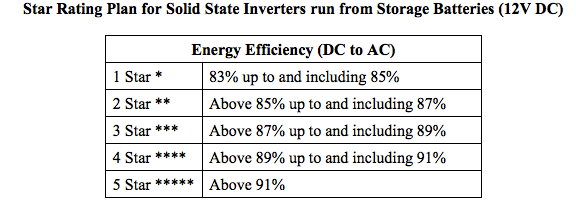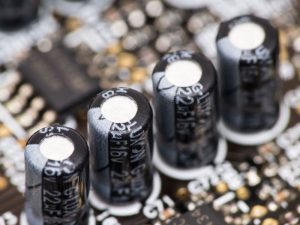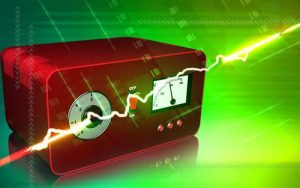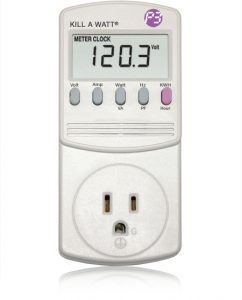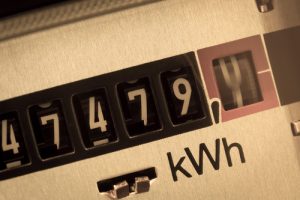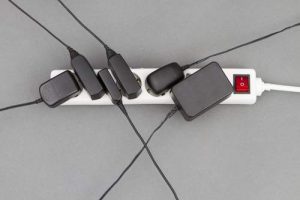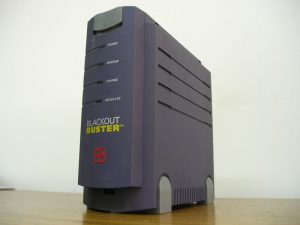Energy Efficient Star Rated Power Inverters in India
- Where do Power Inverters get their electricity from?
- Do Power Inverters Consume Electricity or Save Electricity?
- BEE introduces Star Ratings for Power Inverters
- Current Status of Star Ratings in Inverters
- How Does Efficiency Impact Backup Time
- What does BEE rating not cover?
- How Much Is The Total Power Consumption of a typical BEE star rated Inverter in a Day?
- Conclusion
Power cut is a major problem in most parts of India. Power Inverters are used by many to run some of the appliances during these power cuts. Have you ever wondered where the power comes from in those power inverters. We at Bijli Bachao recently got a question from a reader expressing his surprise that his electricity bills increased after installing a power inverter. Let us try and answer two questions in this regard:
- Where do Power Inverters get their electricity from?
- Do Power Inverters Consume Electricity or Save Electricity?
- BEE introduces Star Ratings for Power Inverters
- Current Status of Star Ratings in Inverters
- How Does Efficiency Impact Backup Time
- What does BEE rating not cover?
- How Much Is The Total Power Consumption of a typical BEE star rated Inverter in a Day?
- Conclusion
- Where do Power Inverters get their electricity from?
- Do Power Inverters consume electricity or save electricity?
Let’s take these questions one at a time:
Where do Power Inverters get their electricity from?
Power inverters, unlike Diesel Generator sets, DO NOT generate their own electricity. What they do is that they store the electricity that is coming from the grid (or your electricity line) in the batteries connected to them. When power goes off, the electricity stored in these batteries is used to run your appliances. This means that if you did not have an inverter in the past, your electricity bills were lower because of the simple reason: your appliances were not running. When you started using power inverter, your electricity bills increased because the inverter stored electricity in batteries when your power was on, and used it when there was no power.
Does this mean that Power Inverters consume electricity they save electricity? Let’s look at this question.
Do Power Inverters Consume Electricity or Save Electricity?
The electricity needed to run appliances during power cuts is something that cannot be saved by a Power Inverter. Power inverters consume electricity to power appliances during power cuts. The only way to save electricity is by using efficient appliances. Similar to any other appliance inverters also operate at certain efficiency level. The total electricity used by a power inverter is more than what your appliances need to keep running during power cuts. Hence one can use efficient inverters which consume less electricity to keep their electricity bills low.
And why does a power inverter consume more:
- Because a power inverter itself is an appliance that needs some electricity to keep running.
- The job of a power inverter is to convert AC to DC and vice versa (during power cuts). At every stage there are losses for conversion. The losses are more if the load is much less as compared to the rated load of the power inverter. An efficient inverter will have good sensors to eliminate losses by sensing load levels.
- A very important factor for inverter efficiency is the harmonics generated by the inverter when connecting a motor load. A pure sine wave inverter will have much less harmonic distortion and thus much better efficiency, whereas a square wave or modified sine wave inverter will have lesser efficiency.
BEE introduces Star Ratings for Power Inverters
To minimize losses of electricity due to inefficiencies and to bring some structure to power inverters market, BEE has introduced a new Star Rating scheme for power inverters. Currently, the Star Rating scheme for inverters cover inverters that run on 12V DC battery and can support 250 VA to 2500 VA of continuous load (there is a plan to include 24V DC system soon). The basic requirement for inverters eligible for star rating is to have basic IS (Indian Standards) certification (as mentioned in IS 13314:1992 SOLID STATE INVERTERS RUN FROM STORAGE BATTERIES-SPECIFICATION). The following parameters are tested for any inverter before giving a star rating:
- No Load Test: To check the performance of an inverter when no load is connected to it.
- Power Factor: It’s ensured that the power factor of the inverter at the Resistive-Inductive (RL) is no less than 0.8. To know more about power factor check this link: What is Power Factor?
- Total Harmonic Distortion: The total harmonic distortion of the inverter should be as specified in Indian Standards (IS).
- Total Output Test: Tests are conducted to make sure that the load specified (in VA) is the correct load that the inverter can handle.
After these tests, the star rating is given as per the specifications below:
Current Status of Star Ratings in Inverters
Not all of BEE’s star rating schemes are mandatory schemes. And like many others, this one is a Voluntary scheme till the end of 2016. In other words, it’s not necessary for manufacturers to get their products certified. But certainly a star rating carries a lot of value and a higher star rating gives a lot of trust and comfort to a consumer while buying. Till now (as on 5th August 2016), only one inverter has been rated by BEE on star rating. Su-kam, one of the leading brands of power inverters in India has taken a lead on this one. They have got one of their inverters rated by BEE and it has got BEE 4 star rating. The name of the model is Su-kam Falcon HBU which has an efficiency level of 89.40% (as per BEE data).
How Does Efficiency Impact Backup Time
Suppose you have a 500 VA of load that you want to support on an inverter. You have a battery of 150 Ah, and two options for inverter: one with an efficiency of 90% and another one with an efficiency of 83%.
A 150 Ah battery of 12V can store 150×12 = 1800 VAh of electricity. But not all of it is converted to useful electricity because of the efficiency factor of inverter.
A 90% efficient inverter will provide 1800 x 0.9 = 1620 VAh of electricity. This means it will run for 1620 VAh / 500 VA = 3.24 hrs or roughly 3 hours and 15 mins.
A 83% efficient inverter will provide 1800 x 0.83 = 1494 VAh of electricity. This means it will run for 1494 VAh / 500 VA = 2.99 hrs or roughly 2 hours 19 mins.
So, effectively with a 90% efficient inverter, you get an extra 15 mins of backup time.
What does BEE rating not cover?
Currently, the BEE rating does not include efficiency of inverters while converting AC to DC, which means the star rating does not include the power consumption of the inverter when it is charging the batteries taking power from the grid. This is an important component, because if the inverter provides a backup of 4 hours, it still remains connected to the grid for 20 hours a day. Therefore, “No Load” power consumption (as it’s technically called) should also be an important aspect to consider while purchasing a new inverter.
How Much Is The Total Power Consumption of a typical BEE star rated Inverter in a Day?
Assuming that you have connected 500 VA load with 150 Ah battery and total power cut is for 3 hrs 15 mins only (power is available for the remaining 20 hrs 45 mins), then total electricity consumption would be:
For backup, the battery stores 1800 VAh of electricity. At a power factor of 0.8, that is roughly equal to 1800 x 0.8 = 1440 Wh or 1.44 units of electricity.
For no load, the inverter consumes 7 watts for 20 hrs 45 mins. Which means consumption is 7 x 20.75 = 145.25 Wh or 0.145 units
So, daily electricity consumption becomes 1.44 + 0.145 = 1.585 units of electricity.
Without power cuts, a 500 VA system at 0.8 power factor would have consumed 500 x 0.8 x 3.25 = 1300 Wh or 1.3 units of electricity.
So, the most energy efficient power inverter consumes about an additional 0.285 units per day as compared to a situation where you have no power cuts.
Note: These numbers are just general values to give an idea about the most efficient inverter. The actual numbers of your specific inverter will depend on its efficiency and load conditions.
Conclusion
If you experience power cuts in your area and use a power inverter, then it is bound to add to your total electricity consumption and impact your electricity bills accordingly. But, if you want to reduce that impact, you should go for a power inverter with a higher efficiency. Your best bet is to start urging companies to manufacture BEE star rated power inverters.
About the Author:
Abhishek Jain is an Alumnus of IIT Bombay with almost 10 years of experience in corporate before starting Bijli Bachao in 2012. His passion for solving problems moved him towards Energy Sector and he is keen to learn about customer behavior towards Energy and find ways to influence the same towards Sustainability. More from this author.

